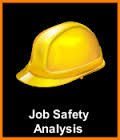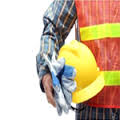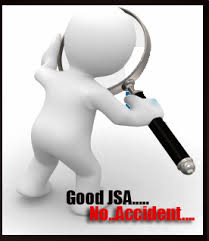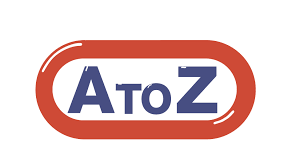Job Safety Analysis(JSA):
A job safety analysis (JSA) is a procedure which helps integrate accepted safety and health principles and practices into a particular task or job operation. In a JSA, each basic step of the job is to identify potential hazards and to recommend the safest way to do the job. Other terms used to describe this procedure are job hazard analysis (JHA) and job hazard breakdown.
Some individuals prefer to expand the analysis into all aspects of the job, not just safety. This approach is known as total job analysis. Methodology is based on the idea that safety is an integral part of every job and not a separate entity. In this document, only health and safety aspects will be considered.
The terms "job" and "task" are commonly used interchangeably to mean a specific work assignment, such as "operating a grinder," "using a pressurized water extinguisher," or "changing a flat tire." JSAs are not suitable for jobs defined too broadly, for example, "overhauling an engine"; or too narrowly, for example, "positioning car jack."
Benefits of doing a Job Safety Analysis:
One of the methods used in this example is to observe a worker actually perform the job. The major advantages of this method include that it does not rely on individual memory and that the process prompts recognition of hazards. For infrequently performed or new jobs, observation may not be practical.
One approach is to have a group of experienced workers and supervisors complete the analysis through discussion. An advantage of this method is that more people are involved in a wider base of experience and promoting a more ready acceptance of the resulting work procedure. Members of the joint occupational safety and health committee must participate in this process.
Initial benefits from developing a JSA will become clear in the preparation stage. The analysis process may identify previously undetected hazards and increase the job knowledge of those participating. Safety and health awareness is raised, communication between workers and supervisors is improved, and acceptance of safe work procedures is promoted.
A JSA, or better still, a written work procedure based on it, can form the basis for regular contact between supervisors and workers. It can serve as a teaching aid for initial job training and as a briefing guide for infrequent jobs. It may be used as a standard for health and safety inspections or observations. In particular, a JSA will assist in completing comprehensive accident investigations.
Four basic steps:
Four basic stages in conducting a JSA are:
- selecting the job to be analyzed.
- breaking the job down into a sequence of steps.
- identifying potential hazards.
- determining preventive measures to overcome these hazards.
Important to know when "selecting the job"?
Ideally, all jobs should be subjected to a JSA. In some cases there are practical constraints posed by the amount of time and effort required to do a JSA. Another consideration is that each JSA will require revision whenever equipment, raw materials, processes, or the environment change. For these reasons, it is usually necessary to identify which jobs are to be analyzed. Even if analysis of all jobs is planned, this step ensures that the most critical jobs are examined first.
Factors to be considered in setting a priority for analysis of jobs include:
- Accident frequency and severity: jobs where accidents occur frequently or where they occur infrequently but result in disabling injuries.
- Potential for severe injuries or illnesses: the consequences of an accident, hazardous condition, or exposure to harmful substance are potentially severe.
- Newly established jobs: due to lack of experience in these jobs, hazards may not be evident or anticipated.
- Modified jobs: new hazards may be associated with changes in job procedures.
Infrequently performed jobs: workers may be at greater risk when undertaking non-routine jobs, and a JSA provides a means of reviewing hazards.
How do I break the job into "basic steps"?
- After a job has been chosen for analysis, the next stage is to break the job into steps. A job step is defined as a segment of the operation necessary to advance the work. See examples below.

- Care must be taken not to make the steps too general. Missing specific steps and their associated hazards will not help. On the other hand, if they are too detailed, there will be too many steps. A rule of thumb is that most jobs can be described in less than ten steps. If more steps are required, you might want to divide the job into two segments, each with its separate JSA, or combine steps where appropriate. As an example, the job of changing a flat tire will be used in this document.
- An important point to remember is to keep the steps in their correct sequence. Any step which is out of order may miss serious potential hazards or introduce hazards which do not actually exist.
- Each step is recorded in sequence. Make notes about what is done rather than how it is done. Each item is started with an action verb. Appendix A illustrates a format which can be used as a worksheet in preparing a JSA. Job steps are recorded in the left hand column, as shown below:
- This part of the analysis is usually prepared by knowing or watching a worker do the job. The observer is normally the immediate supervisor. For a more thorough analysis often happens by having another person, preferably a member of the joint occupational health and safety committee, participate in the observation. Key points are less likely to be missed in this way.
- The job observer should have experienced and be capable in all parts of the job. To strengthen full co-operation and participation, the reason for the exercise must be clearly explained. The JSA is neither a time and motion study in disguise, nor an attempt to uncover individual unsafe acts. The job, not the individual, is being studied in an effort to make it safer by identifying hazards and making modifications to eliminate or reduce them. The worker's experience contributes in making job and safety improvements.
- The job should be observed during normal times and situations. For example, if a job is routinely done only at night, the JSA review should also be done at night. Similarly, only regular tools and equipment should be used. The only difference from normal operations is the fact that the worker is being observed.
- When completed, the breakdown of steps should be discussed by all the participants (always including the worker) to make that all basic steps have been noted and are in the correct order.
Identify potential hazard:
Once the basic steps have been recorded, potential hazards must be identified at each step. Based on observations of the job, knowledge of accident and injury causes, and personal experience, list the things that could go wrong at each step.
A second observation of the job being performed may be needed. Since the basic steps have already been recorded, more attention can now be focused on each potential hazards. At this stage, no attempt is made to solve any problems which may have been detected.
To help identify potential hazards, the job analyst may use questions such as these ( this is not a complete list):
- Can any body part get caught in or between objects?

- Do tools, machines, or equipment present any hazards?
- Can the worker make harmful contact with moving objects?
- Can the worker slip, trip, or fall?
Can the worker suffer strain from lifting, pushing, or pulling?
- Is the worker exposed to extreme heat or cold?
- Is excessive noise or vibration a problem?
- Is there a danger from falling objects?
- Is lighting a problem?
- Can weather conditions affect safety?
- Is harmful radiation a possibility?
- Can contact be made with hot, toxic, or caustic substances?
- Are there dusts, fumes, mists, or vapours in the air?
Potential hazards are listed in the middle column of the worksheet, numbered to match the corresponding job step. For example:
Again, all participants should jointly review this part of the analysis.
Determine preventive measures:
The final stage in a JSA is to determine ways to eliminate or control the hazards identified. The generally accepted measures, in order of preference, are:
1. Eliminate the hazard
This is the most effective measure. These techniques should be used to eliminate the hazards:
- Choose a different process

- Modify an existing process
- Substitute with less hazardous substance
- Improve environment (ventilation)
- Modify or change equipment or tools
2. Contain the hazard
If the hazard cannot be eliminated, contact might be prevented by using enclosures, machine guards, worker booths or similar devices.
3. Revise work procedures
Consideration might be given to modifying steps which are hazardous, changing the sequence of steps, or adding additional steps (such as locking out energy sources).
4. Reduce the exposure
These measures are the least effective and should only be used if no other solutions are possible. One way of minimizing exposure is to reduce the number of times the hazard is encountered. An example would be modifying machinery so that less maintenance is necessary. The use of appropriate personal protective equipment may be required. To reduce the severity of an accident, emergency facilities, such as eyewash stations, may need to be provided.
In listing the preventive measures, do not use general statements such as "be careful" or "use caution". Specific statements which describe both what action is to be taken and how it is to be performed are preferable. The recommended measures are listed in the right hand column of the worksheet, numbered to match the hazard in question. For example:
How should I make the information available to everyone else?
JSA is a useful technique for identifying hazards so that workers can take measures to eliminate or control hazards. Once the analysis is completed, the results must be communicated to all workers who are, or will be, performing that job. The side-by-side format used in JSA worksheets is not an ideal one for instructional purposes. Better results can be achieved by using a narrative-style communication format. For example, the work procedure based on the partial JSA developed as an example in this document might start out like this:
1. Park vehicle.
a) Drive vehicle off the road to an area well clear of traffic, even if it requires rolling on a flat tire. Turn on the emergency flashers to alert passing drivers so that they will not hit you.
b) Choose a firm and level area for parking. You can jack up the vehicle to prevent rolling.
c) Apply the parking brake, leave the transmission in PARK, place blocks in front and back of the wheel diagonally opposite the flat. These actions will also help prevent the vehicle from rolling.
2. Remove spare and tool kit.
a) To avoid back strain, turn the spare up into an upright position in its well. Stand as close to the trunk as possible and slide the spare close to your body. Lift out and roll to flat tire.
3. Pry off hub cap, loosen lug bolts (nuts).
a) Pry off hub cap slowly with steady pressure to prevent it from popping off and striking you.
b) Using the proper lug wrench, apply steady pressure slowly to loosen the lug bolts (nuts) so that the wrench will not slip, get lost or and hurt your knuckles.
4. And so on.
Appendix A: Sample form for Job Safety Analysis Worksheet
Appendix B: Sample forms for Tasks and Job Inventory:
Tips and Tricks
It is vitally important that workers understand that it is not the JSA form that will keep them safe on the job, but rather the process it represents. It is of little value to identify hazards and devise controls if the controls are not put in place.
Workers should never be tempted to "sign on" the bottom of a JSA without first reading and understanding it. JSAs are quasi-legal documents, and are often used in incident investigations, contractual disputes, and court cases.
Everybody in the workforce should be involved in creating the JSA. The more minds, the more years of experience applied to analysing the hazards in a job, the more successful the work group will be in controlling them.

